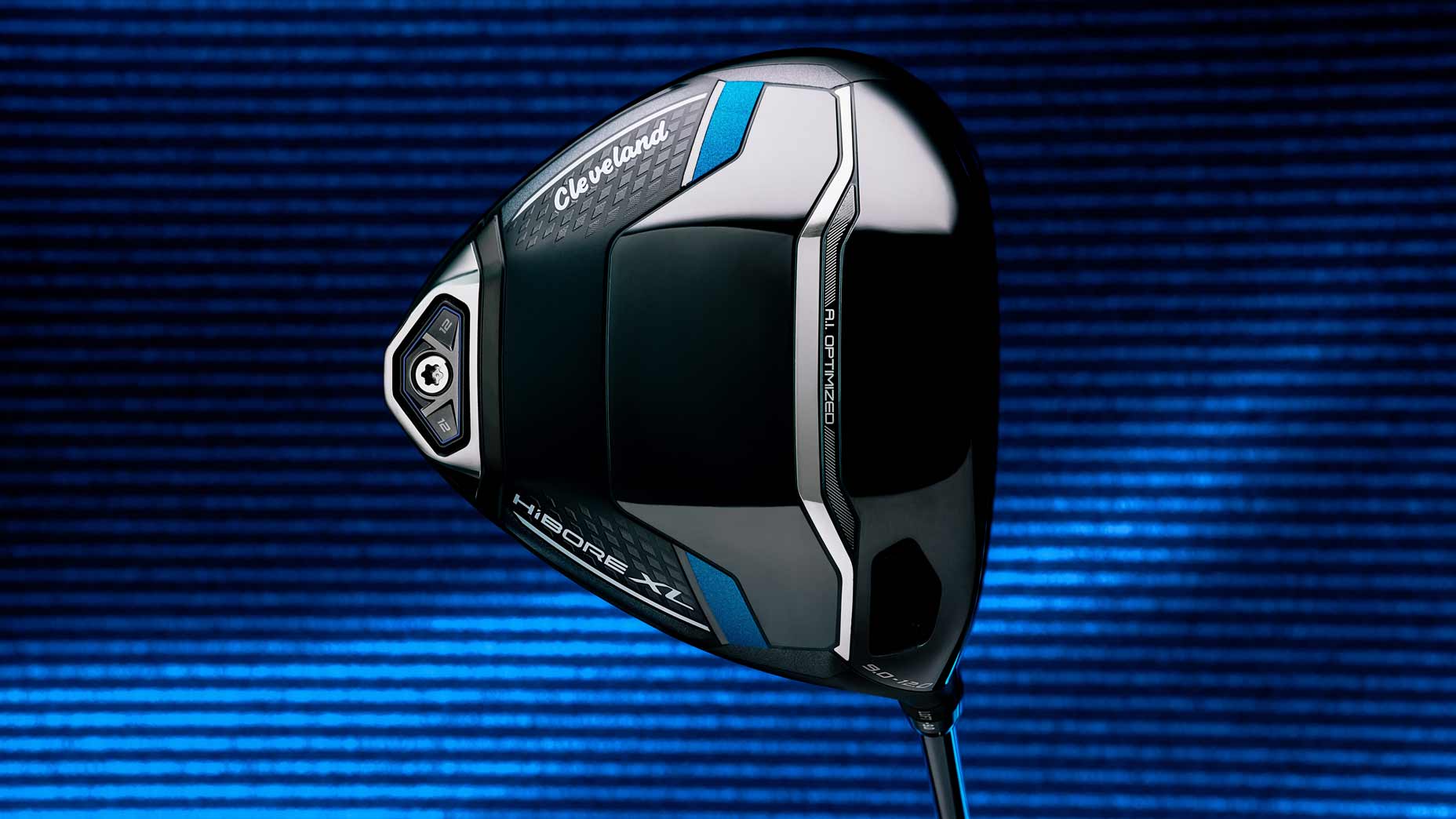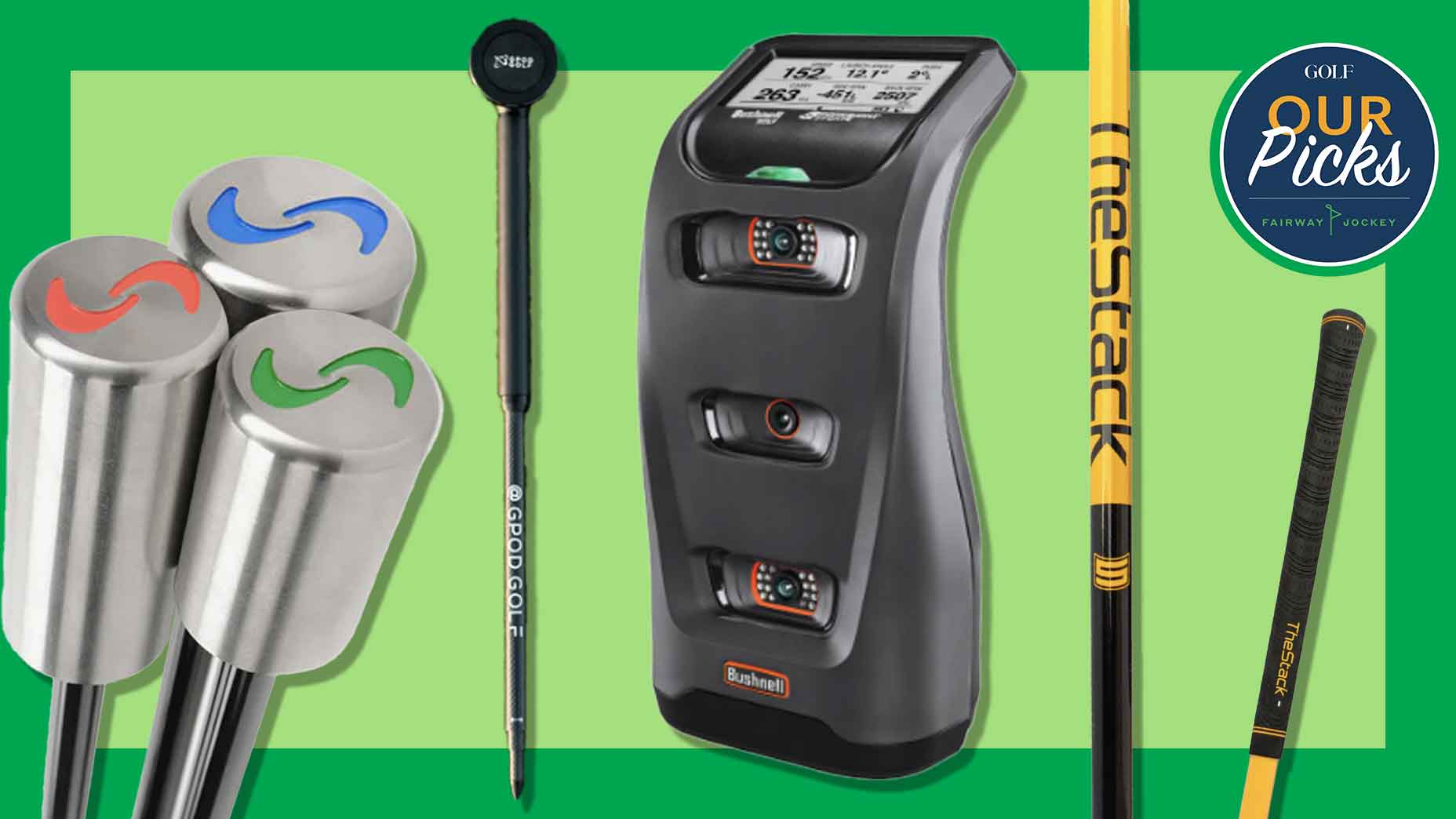The ad copy caught my eye: YES, IT WORKS! TEE OFF WITH PRAZZA AND WALK STRAIGHT TO YOUR BALL EVERY TIME!
The message touched a nerve. I was only a few days removed from a round at Clover Hills Country Club, where I had donated two sleeves to the tree-and-rough gods.
“Losing your ball is an unwanted hassle,” the ad continued. “On average, most golfers lose four balls per round, adding a total of 20 minutes of play just searching for their ball.” To combat this injustice and to keep play moving, the good folks at Prazza—a Dutch company with roots in the lucrative field of commercial-vehicle tracking—devised a ball containing a miniature radio transmitter that sends a beeping sound to your handset.
“Effective within 100m, your Prazza Golf Ball Finder will find your high performance Prazza ball every time,” the ad concludes. “Save time, save shots, save money—and play golf with a smile!” I was already smiling, but I wasn’t quite ready to fork over $399 for the Prazza handset or $30 for a sleeve of balls. And why a sleeve? Shouldn’t one ball be enough?
NEWSLETTERS: Sign up for latest golf news, tips and insider analysis
Then I saw a Christmas ad for the Wilson X Connected basketball. “If they’ve got any kind of game—and an iPhone—they’ll want this ball,” the ad boasted. “The world’s first attachment-free smart basketball tracks makes, misses and shot range when paired with the app via Bluetooth and any regulation 10-foot hoop.” I don’t lose many basketballs, so I was able to resist Wilson’s pitch. But the notion that we’re about to enter an era of “smart ball” technology is now firmly embedded in my dual-core, soft-center cranium.
Did I mention Topgolf? The driving-range chain recently opened one of its triple-decker playpens near my Kansas City home. “Sprawling entertainment venue with a high-tech driving range & swanky lounge with drinks & games!” the website proclaimed. I’m a recovering range rat, so the promise of lofty tech was like catnip, if I can mix small-mammal metaphors. I celebrated the New Year on the third tier of the Overland Park Topgolf, smacking smart balls down to flying-saucer-shaped targets. Upon landing, the balls somehow communicated with a computer in my stall, posting scores on a high-def screen—or, in “practice mode,” the distance each ball had traveled.
Topgolf’s yardage data satisfied my long-held yearning for real-time analytics regarding full-iron shots versus knockdown shots with a less-lofted club. (I found it to be a one-club differential with my wedges, two clubs with the longer irons.) Topgolf’s pepperoni-and-sausage flatbread satisfied my yearning for lunch.

To satisfy my curiosity, I called Andrew Macaulay, chief technology officer for Dallas-based Topgolf International. He confirmed that Topgolf’s range ball contains a passive radio-frequency identification chip (RFID) about a centimeter wide, borrowing technology used in everything from retail-store anti-theft tags to livestock identification. “Otherwise,” Macaulay said, “it’s a perfectly regular single-core golf ball.”
Only smarter. When you wave your clubhead over an electric eye in the ball dispenser, a Topgolf orb rolls past an antenna that activates the chip and tags it to the player. The system then waits for the ball to show up on the target field, which employs roughly 500 netted target segments and an end-of-the-range trench. A net collects the ball and funnels it to a box, where it passes another antenna, which reads the ID and signals the computer in the bay. “All the smarts really happen in the bay computer,” Macaulay said. “It figures out the yardage or the score for the game you’re playing.” Asked if the chips were durable enough to withstand the pummeling of a tour pro, Macaulay said that the manufacturer, Callaway Golf, had fired balls out of a cannon into steel plates without consequence: “The cover is going to degrade before the chip stops functioning.”
I had to remind myself that we were talking about a range ball. To be genuinely smart, a smart ball has to get past the equipment sniffers at the United States Golf Association. Which, it turns out, may not be as difficult as it sounds. “It’s been done,” said Dick Rugge, who retired in 2013 after 13 years as the USGA’s senior technical director. “There was a finder ball a dozen or so years ago that was conforming.”
The RadarGolf ball, as it was called, had a cool, hunting-dog-at-point logo, which made it a collectible in addition to being … uh, collectible. An embedded chip reflected signals sent from a hand-held device, assisting visually impaired golfers; but due to its limited detection range (and high price) it never caught on with sighted ball buyers. The more findable Prazza ball, endorsed by the United States Blind Golf Association, aimed for a broader market. “It saves time, saves strokes and saves people money on golf balls,” said Michael Lynch, president of IntheHoleGolf.com, Prazza’s North American distributor. Asked how long until we have chips small enough to embed in a ball, Lynch said, “Five years, maybe? That’s the technology that will blow everybody’s socks off. With a GPS chip, you could play at night without a glow ball!”
Sharing his excitement, I said, “Or find your ball under a pile of leaves in the rough!”
Lynch reined me in by pointing out that Prazza had tried to license its technology to the major ball makers and had subsequently quit the business. Chuckling, he added, “The ball companies don’t really want you to find their golf ball.”
I chuckled back, recalling a British film, The Man in the White Suit, about a garment-industry chemist who invents a fabric that never wears out. Hilarity ensues.
The truth is, I don’t dream of a ball that’s merely smart enough to say, “Here I am!” I want a ball that captures launch angle, initial velocity, backspin, sidespin and smash factor, along with all pertinent environmental data, including air temperature, wind velocity and proximity to the beverage cart. “It’s all good,” Rugge said of my hypothetical genius ball, “as long as you can’t access the information while you’re playing the round.” Thud. “That would be like getting advice from a third party.”
John Spitzer, the USGA’s current equipment czar, was equally deflating. “We have a decision that says you’re allowed to have a chip in the ball,” he said, “but the use of a device to find it would be in violation according to Rule 14-3.” I blinked repeatedly, trying to absorb this information. “We allow the device to collect data,” he said patiently. “It’s the access to the data during the round that’s forbidden.”
I could imagine the ad copy: THE FOREVER BALL! LOSE IT IN THE WOODS AND RECOVER IT … IF YOU FEEL LIKE GOING BACK!
Spitzer must have sensed my dismay. “Just because it’s not currently allowed doesn’t mean it won’t be in the future,” he said. “Everything’s happening incredibly fast.”
So that’s how it stands. The smart ball is on the horizon, but for now it’s something you enjoy with wings and mushi at Topgolf.
And chips. Don’t forget the chips.







